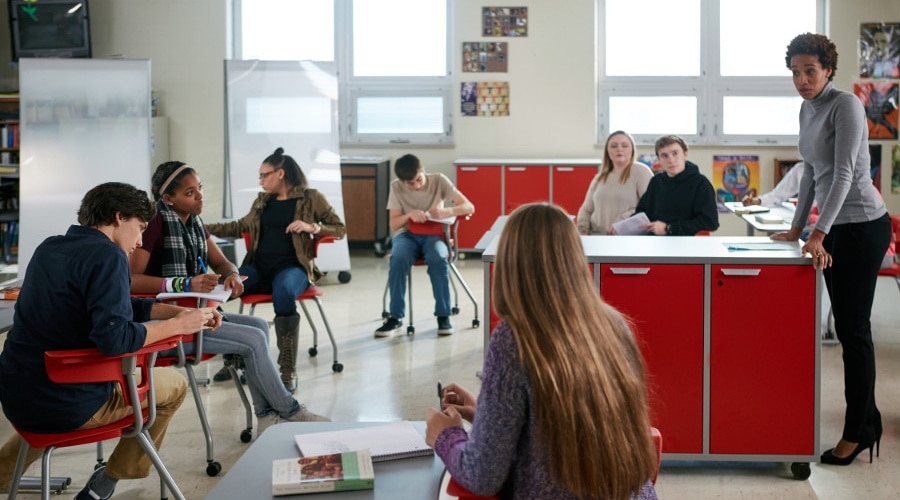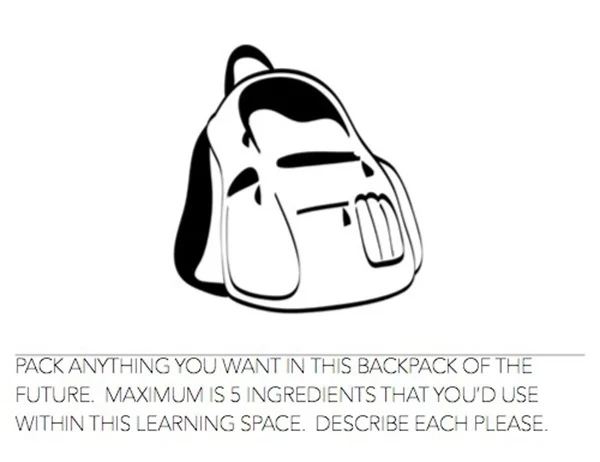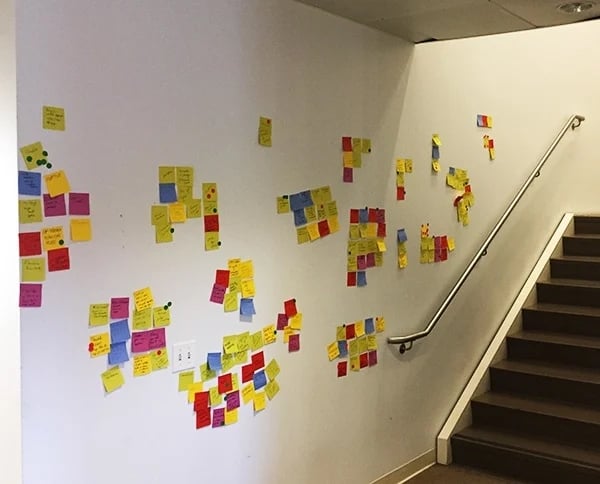- What's New
- Pricing & Purchasing
- Lead Times
- Literature & Samples
- Services & Warranties
- Careers
- Find a Rep
The "Human" in Human-Centered Design for Education

A picture is worth a thousand words. It’s a story, frozen and captured in time. A story that its creator hopes is accurately portrayed. The problem is that our eyes can make an absolute mess of a picture. Viewers naturally craft a counterfeit with their eyes.
What do I mean by a counterfeit?
Close your eyes and imagine a photo of an active learning environment, a bustling classroom with teaching and learning occurring. What do you see?
- Flexibility, yes.
- Digital and analog tools like computers, pens and papers.
- Mechanical tools, sometimes.
- Buzz words on writeable surfaces, you bet.
Students are learning, teachers are teaching. All is right!
Now dig deeper and really look at the elements and people in the photo. Do you really know what’s going on in that classroom? While the photo tells a story about learning, there are personal stories captured as well. Somewhere in that photo you'll find the WHY. The drivers behind the personal interactions and the physical space.
Why is that little girl seated at a desk using a notepad and pencil while another is standing at a table swiping away on an iPad?
Why are several students working in a group while another is quietly reading in the corner?
You notice groupings of desks, cubbies for storage, and chairs stacked in the background. How will the furniture be used to achieve the teacher’s goals?
The personal stories inform the larger picture, but all too often the personal tales are lost to the larger picture. The photo becomes one of the thousands of images we see on a daily basis. Our eyes deceive us, leading to a “me too” moment. "I’ve been there, seen that. I know what’s going on in that learning space, and I want to achieve the same thing."
What does human-centered design for schools mean?
This situation demonstrates the importance of Human-Centered Design in education when creating solutions, products and services.
A human-centered design process simply means that we design for the humans who will use the solution. A process developed by the Stanford D.School, design is not based on our notions of what an effective learning environment is, our “me too” inclinations. Human-centered design identifies the “why” and establishes the foundation for authentic creation.
What is “authentic creation”? Human-centered design is an iterative approach. Innovation and change are driven by understanding how and why people will use a design solution. Authentic creation leads to real change much faster than a typical copycat strategy of “me too”. That’s the end game.
Where do designers and educators start and what is the process?
If you're a designer, start with empathy. Share an experience with students and/or teachers and ask to observe a learning environment in action. First-hand observations of education goals brings perspective, removing guesswork and ideas generated by our “me too” tendencies. Collecting qualitative data about behavior helps uncover design drivers that make human-centered design possible.
One of my favorite empathy exercises is the “backpack of the future” exercise.

Pass out the note card above to students when you're exploring or reimagining learning spaces. An open question allows you to reach a large amount of students and receive feedback on a variety of topics – likes, wishes, wants and needs.
The simple exercise imposes no limitations on student mindsets. It allows for free, curious and uninhibited thoughts to flow. After finishing the “backpack” exercise, gather everyone’s “ingredients” and group into common themes, synthesizing the information so commonalities and differences easily surface.
Synthesizing the information is usually the most difficult part of the human-centered design process. I highly recommend that you approach this process with a team of trusted experts. The insights and outcomes require more than a single perspective.
Below is a photo of a workshop where a wall of ideas was created through a similar empathy exercise - single ideas grouped together by common, large themes. The results revealed design drivers rooted in empathy.

Once design drivers are identified, move on to physical space. For example, if technology integration surfaces as a need, maybe a makerspace would benefit users. Review what sort of furniture solutions would make for a successful and purposeful space.
Finally, prototype and create a physical learning environment that embodies the design drivers captured in the human-centered design process. As you work through the process, you’ll discover the importance of each driver, establishing the tools and/or products needed to make that vision come to life.
The human-centered design process is fundamentally simple but it also requires hard work. It can be difficult to dive deep into human behavior, organizational implications and cultural limitations. The work is intense but the end result leads to "we are" instead of “me too”.
To learn more about KI's human-centered design process for education, view the design story of the Ruckus Collection.
Subscribe
Stay up to date with the latest trends and more.
